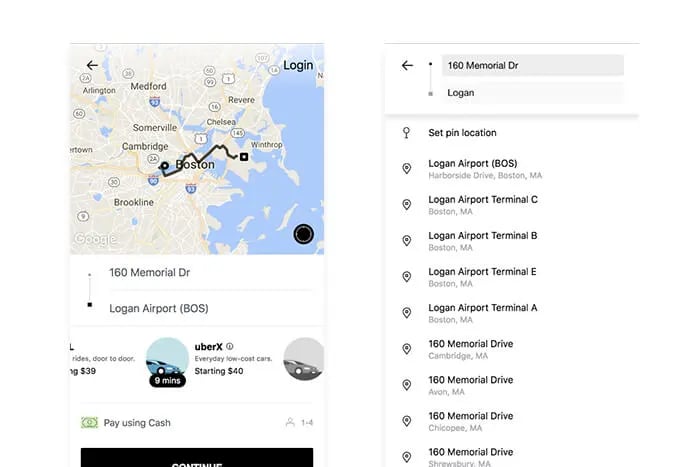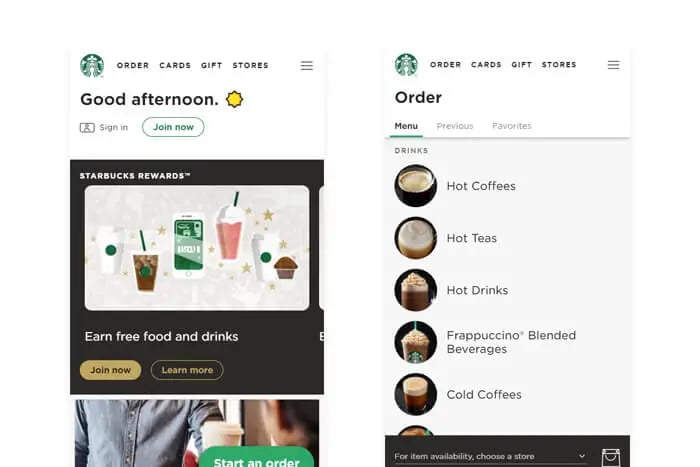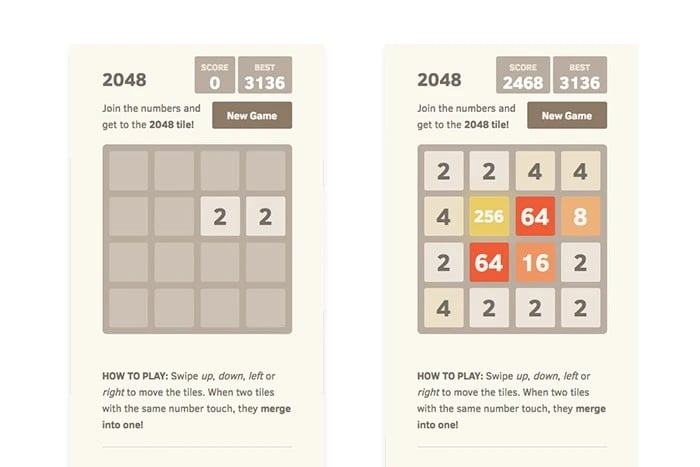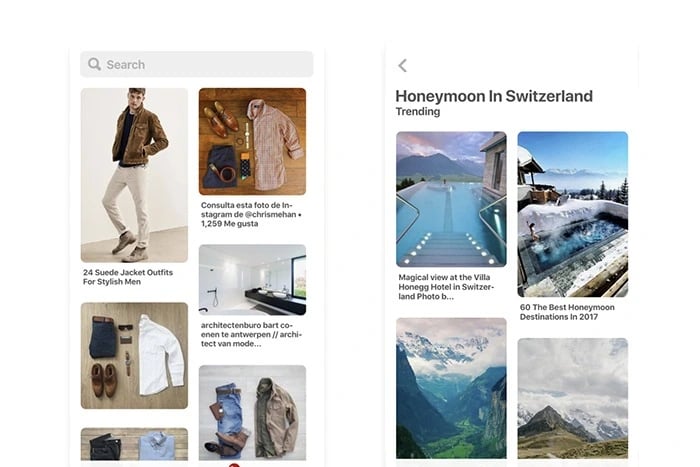What's a progressive web app (PWA)?
A progressive web app or a PWA is an application built on a web framework, allowing users to immediately use or install them on their phone by just visiting a website and not having to find and download them from an app store. Users can also use PWAs offline and receive push notifications from them. In a nutshell, a PWA is basically a mobile website that has the functionality of an app, giving users the speed of the internet and the experience of a mobile application.
Progressive Web App Examples
- Uber
- Starbucks
- 2048
- Housing.com
1. Uber

Image Credit: SimiCart
To provide their users who use low-end mobile devices with a similar web experience as their mobile app, Uber built a progressive web app that works on 2G networks. So regardless of your network speed, device, and even location, you can use Uber’s PWA to book a ride. This is especially helpful if you’re in a location with spotty service or your phone isn’t compatible with their mobile app.
2. Starbucks

Image Credit: SimiCart
Starbucks’ progressive web app is quite similar to its native mobile app, but the biggest difference between the two is that their PWA takes up significantly less space than their native mobile app and it works offline. When you’re offline, you can use their PWA to browse their menu, customize your orders, and add items to your cart. When you’re online, you can check each store location’s prices and place orders.
3. 2048

Image Credit:SimiCart
There’s arguably no other game as addicting as 2048. When it was released in 2014, the video game attracted over 10 million unique visitors in its first month, and when it was rolled out as a mobile app, it attracted even more downloads. When you play 2048 on its progressive web application, it looks and feels just like its mobile app, but its main differentiator is that you can play the game both online and offline.
4. Pinterest

Image Credit:SimiCart
When Pinterest discovered that only 1% of their mobile users converted into sign-ups, logins, or native app installs because of their app’s poor user experience (a 23-second load time), they reconstructed their mobile app into a progressive web application. Within three months, their PWA saw a 40% increase in time spent over five minutes, a 44% increase in user-generated ad revenue, and a 50% increase in ad click-throughs compared to their old mobile app.
5. Housing.com
Housing.com, India’s main online real estate platform that attracts over 9 million visits per month, has a target audience of low-end mobile device users who only have access to network speeds of 2G or 3G. So to cater to their users and boost their conversion rates, they built a progressive web app that users can quickly find property on even when they’re offline.
Website Development
.png?width=112&height=112&name=Image%20Hackathon%20%E2%80%93%20Vertical%20(50).png)









.jpg)

![What Is CSS? [FAQs]](https://53.fs1.hubspotusercontent-na1.net/hub/53/file-309168340-jpg/Blog-Related_Images/what-is-css.jpg)